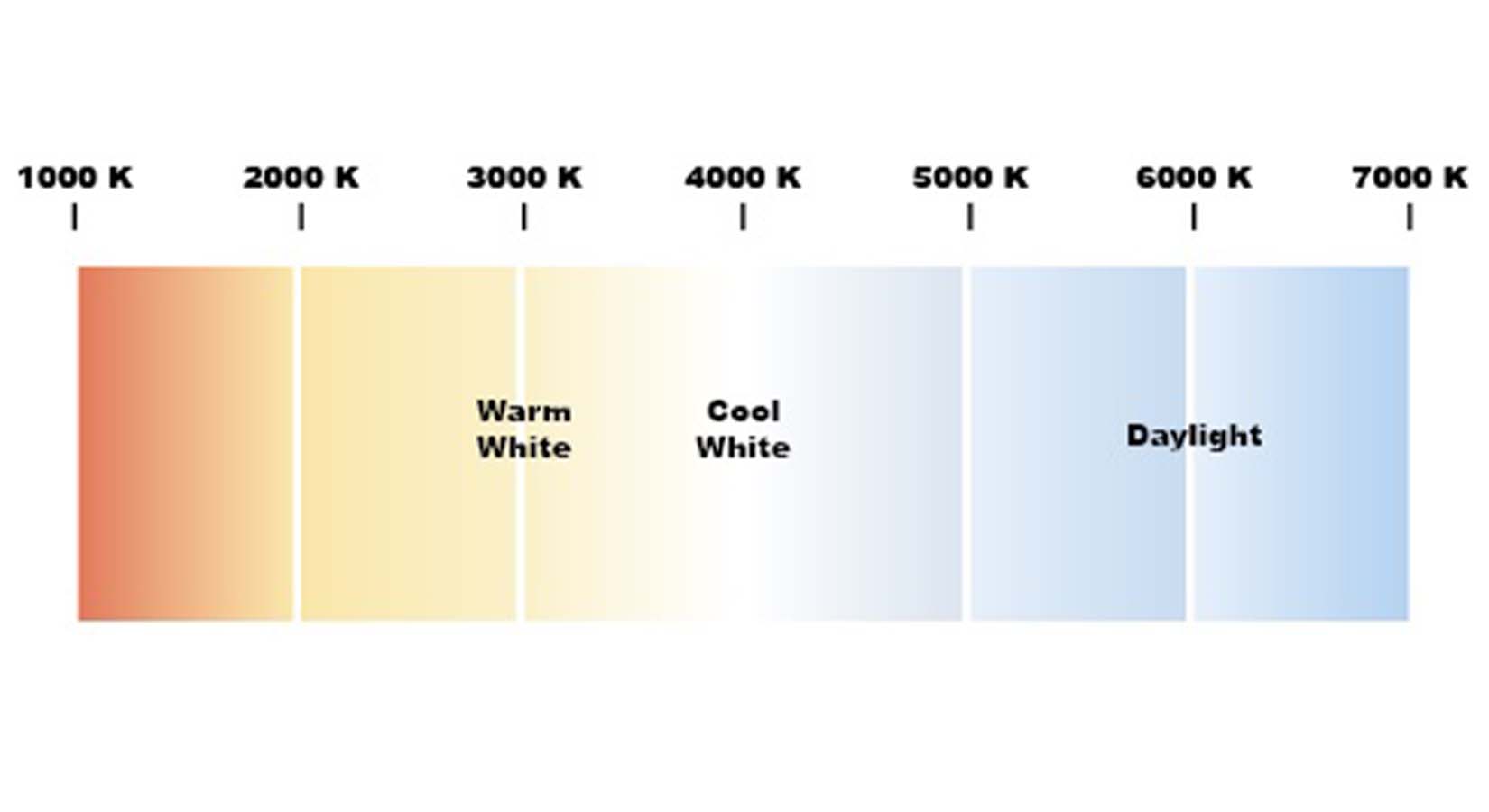Colour temperature
Also known as colour appearance, colour temperature refers to how warm or cool light appears.
To choose the right colour temperature when buying a replacement light bulb, take the old one with you to the shop and match it up. The colour temperature is often written on the side of the base.
However, if you would like to learn how to choose a different colour temperature that will better suit the room and give you a different mood or effect, read on. Explore this page to learn:
- What is colour temperature?
- The difference between warm white and cool white
- What colour temperature to choose
- What Colour Rendering Index (CRI) means.
What is colour temperature?
Colour temperature is about the shade of white light emitted. It’s whether a bulb produces a ‘warmer’ visual effect like an old incandescent lamp or a ‘cooler’ visual effect like fluorescent tubes used in industrial settings.
When choosing a bulb and considering colour temperature, it is just as important to know what colour temperature isn’t.
Despite referring to ‘colour’, it isn’t related to coloured light bulbs such as party bulbs and Christmas lights. Also, despite referring to ’temperature’, it isn’t related to how much heat a light bulb physically generates – that is, the heat you feel – like you’d feel from a bathroom heat lamp.
The difference between warm white and cool white
Figure 1 Colour temperature is measured in Kelvin (K) – the lower the number, the warmer (more yellow or red) a white light appears

A light bulb producing a white light can look slightly warmer or slightly cooler. A warm white light bulb has a slightly yellow or amber tone to it, whereas a cool white light bulb appears slightly bluer.
Colour temperature is measured in Kelvin (K) – the lower the number, the warmer the white light appears, while a higher Kelvin will appear cooler. Colour temperature generally ranges from 2700-3300K (warm) to 3300-5300 (cool) – and 6500K is daylight.
Check the different colour temperature globes in our store. Warm White, Cool White, Cool Daylight.
What colour temperature do I choose?
In the past, there were less options for colour temperature – so it was less of a consideration when buying a light bulb. This is because old fashioned incandescent and halogen light bulbs are a warm white.
However nowadays, there is a range of colour temperatures to choose from for each type of lighting technology on the market – with the exception of less efficient incandescent and halogen light bulbs.
This means when you buy a CFL, linear fluorescent or LED light bulb, you can choose the colour temperature that best suits the room or task. You can buy a warm, neutral or cool bulb – or if you buy a smart LED globe, you can change the colour temperature (among other things) using a smartphone app.
Choosing a light bulb with the same colour temperature
To choose the right colour temperature to directly replace your old light bulb, take the blown bulb to the shop to match it up. The colour temperature is often printed on the base, in Kelvin (K).
This is the best way to choose the right bulb if you like the existing lighting effect or mood from your old bulb – or you are replacing one in a room with several matching bulbs. However, you may want to choose a different colour temperature to subtly change the effect in a particular room.
Choosing a light bulb with a different colour temperature
If you aren’t trying to match other bulbs, you may like to choose a temperature to suit a mood. As you can see in the colour temperature table below, different rooms and tasks can suit different colour temperatures.
Cool white can be better for concentrating or seeing detail. Many people prefer cooler lighting in home offices, laundries and garages. See the colour temperature table below.
Warm white light is considered good for relaxing. You may wish to have warmer colour temperature (eg 2700K) in bedside lamps to help prepare for sleep, as blue light can suppress melatonin that your body produces naturally at night to help you sleep.
Table 1: Colour temperature
| Colour description | Kelvin range | Appearance | Typical uses |
|---|---|---|---|
| Warm White | 2700K to 3,300K | a soft, warm light similar to traditional incandescent and halogen bulbs | Suitable for living rooms and bedrooms |
| Cool White | 3300K to 5300K | a neutral light | Suited to studies and kitchens, and for task-based applications such as kitchen benches, garages and workshops |
| Daylight | 5300K to 6500K | can appear harsh, unrelaxed and even sterile | may be suitable good for bathrooms and laundries |
What is the Colour Rendering Index (CRI)?
The Colour Rendering Index (CRI) is an indicator of how accurately colours can be distinguished under a light source.
A CRI of 100 is considered excellent, however for general lighting purposes you can use a bulb with a CRI around 80. If the light bulb is being used in tasks where the colour is important, such as painting, look for a bulb with a CRI of 90 or more.


1 comment
RG ENTERPRISES
Interesting article with great content, appreciate the author’s efforts for writing such a great post. I purchased Chainsaw and it’s spare parts from https://rgeaus.com.au/ and believe me the products were wonderful.